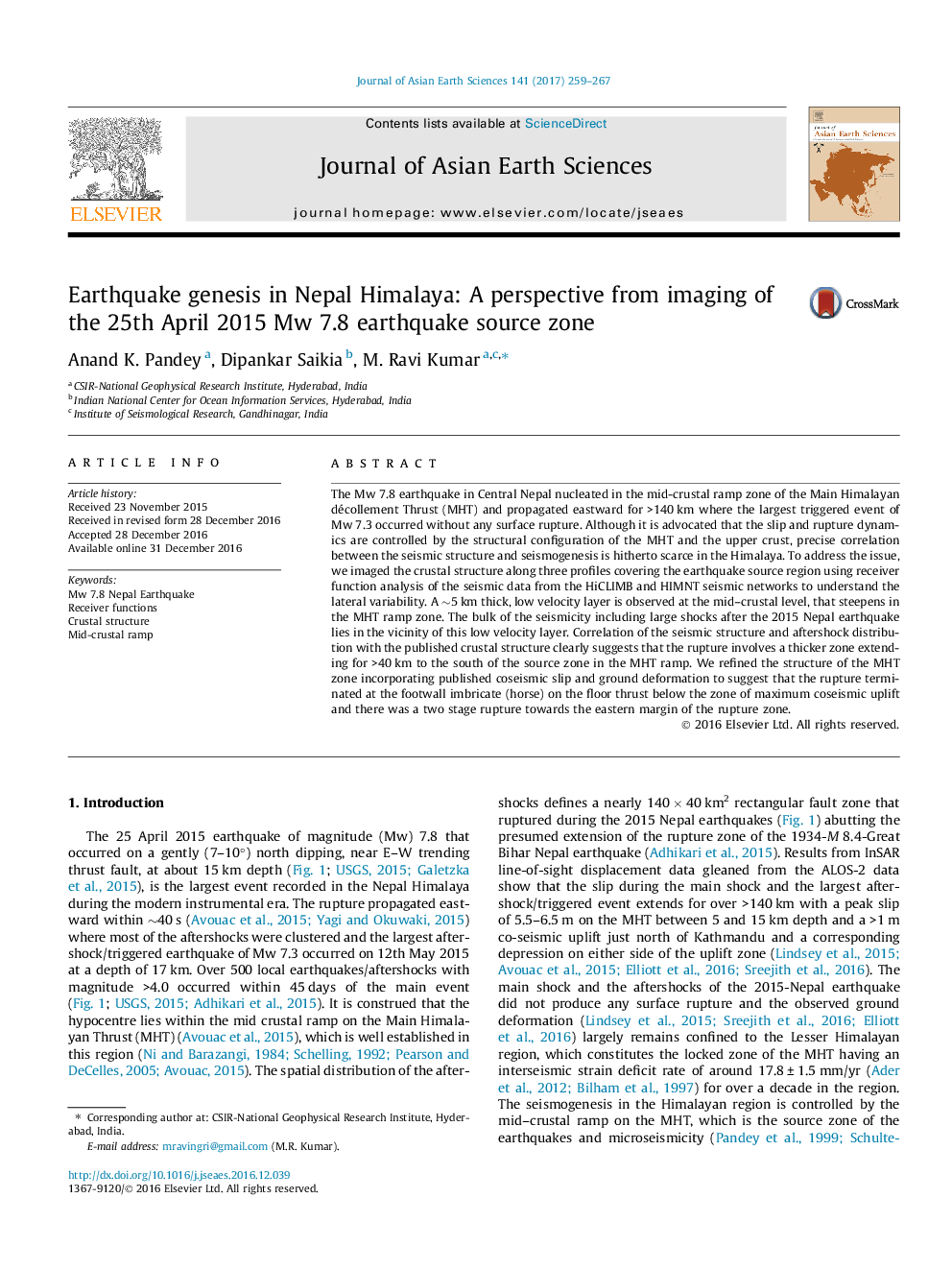| کد مقاله | کد نشریه | سال انتشار | مقاله انگلیسی | نسخه تمام متن |
|---|---|---|---|---|
| 5785850 | 1414088 | 2017 | 9 صفحه PDF | دانلود رایگان |

- Correlation between the seismic structure and seismogenesis in the Nepal Himalaya.
- Delineation of a low velocity layer that corresponds to the Lesser Himalaya sedimentary duplex above the MHT flat.
- Lateral variations in upper crustal structure control rupture propagation.
- Tectonic loading on the duplex caused internal deformation localizing bulk of the aftershocks.
The Mw 7.8 earthquake in Central Nepal nucleated in the mid-crustal ramp zone of the Main Himalayan décollement Thrust (MHT) and propagated eastward for >140Â km where the largest triggered event of Mw 7.3 occurred without any surface rupture. Although it is advocated that the slip and rupture dynamics are controlled by the structural configuration of the MHT and the upper crust, precise correlation between the seismic structure and seismogenesis is hitherto scarce in the Himalaya. To address the issue, we imaged the crustal structure along three profiles covering the earthquake source region using receiver function analysis of the seismic data from the HiCLIMB and HIMNT seismic networks to understand the lateral variability. A â¼5Â km thick, low velocity layer is observed at the mid-crustal level, that steepens in the MHT ramp zone. The bulk of the seismicity including large shocks after the 2015 Nepal earthquake lies in the vicinity of this low velocity layer. Correlation of the seismic structure and aftershock distribution with the published crustal structure clearly suggests that the rupture involves a thicker zone extending for >40Â km to the south of the source zone in the MHT ramp. We refined the structure of the MHT zone incorporating published coseismic slip and ground deformation to suggest that the rupture terminated at the footwall imbricate (horse) on the floor thrust below the zone of maximum coseismic uplift and there was a two stage rupture towards the eastern margin of the rupture zone.
164
Journal: Journal of Asian Earth Sciences - Volume 141, Part B, 15 June 2017, Pages 259-267